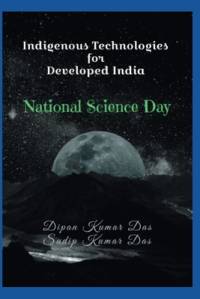Om Indigenous Technologies for Developed India
Chapter 1: Introduction to Indigenous Technologies
In this chapter, we delve into the significance of Indigenous Technologies and their role in shaping a Developed India. The focus is on the importance of fostering innovation, research, and development within the country, and the impact it can have on economic growth, self-sustainability, and technological advancement. The chapter sets the stage for exploring the rich history and potential of indigenous technologies in India.
Chapter 2: National Science Day
This chapter explores the importance of National Science Day in India. Celebrated on February 28th each year to commemorate Sir C.V. Raman's discovery of the Raman Effect, the day is a tribute to the contribution of Indian scientists and their role in the global scientific community. The chapter highlights the themes and activities associated with National Science Day and its role in promoting scientific temper and curiosity among the masses.
Chapter 3: Indian Science Giants
In this chapter, we pay homage to the trailblazing Indian scientists who have made significant contributions to the world of science and technology. From Sir Jagadish Chandra Bose's pioneering work in radio waves to Dr. Homi Bhabha's foundational role in nuclear physics, and the likes of Dr. A.P.J. Abdul Kalam's contributions to space exploration, the chapter celebrates the achievements of these Indian science giants who have left an indelible mark on the global scientific landscape.
Chapter 4: Indigenous Technologies in Agriculture
This chapter focuses on the application of indigenous technologies in agriculture, a sector crucial for India's development. From traditional farming practices to modern innovations such as precision farming and bio-fertilizers, the chapter explores how indigenous technologies are transforming the agricultural landscape, increasing productivity, and ensuring sustainable practices.
Chapter 5: Advancements in Healthcare through Indigenous Technologies
Examining the role of indigenous technologies in healthcare, this chapter explores breakthroughs in medical research, pharmaceuticals, and healthcare delivery. From ancient Ayurveda to modern telemedicine solutions, the chapter showcases the diversity of indigenous technologies that contribute to the well-being of the nation's populace.
Chapter 6: Challenges and Opportunities
Addressing the challenges faced in adopting and scaling indigenous technologies, this chapter discusses the need for policy support, investment, and public awareness. It also explores the opportunities that arise from embracing indigenous technologies in various sectors, fostering a culture of innovation and self-reliance.
Chapter 7: Future Prospects
In the final chapter, we look towards the future of indigenous technologies in India. From emerging fields such as artificial intelligence and biotechnology to the continued growth of traditional knowledge systems, the chapter outlines a vision for a Developed India driven by cutting-edge indigenous technologies. It also emphasizes the importance of nurturing the next generation of scientists and innovators to carry forward the legacy of Indian science giants.
Visa mer

